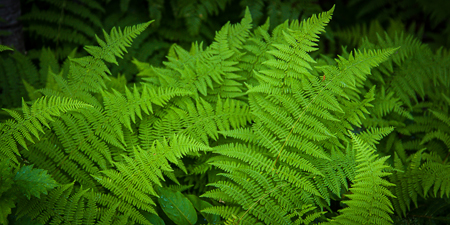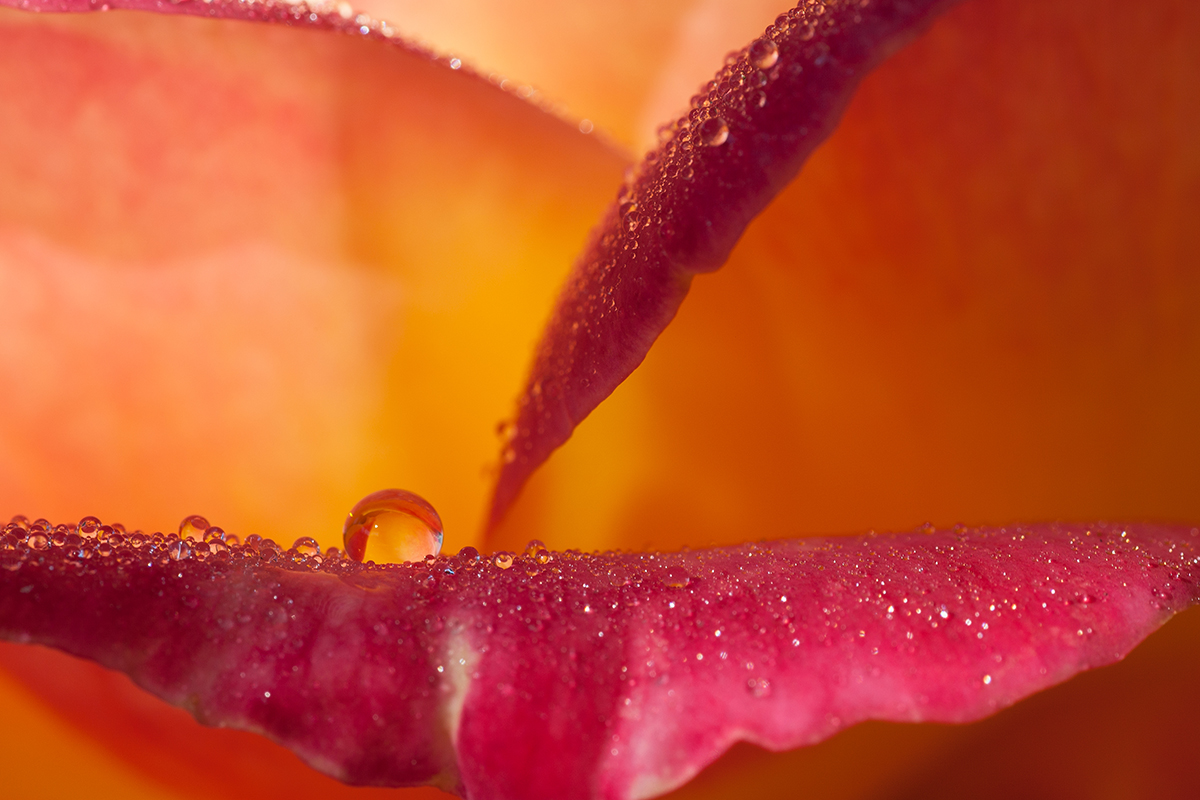How to Create Fine-Art Macro Photos
For Monica Royal, it's all about making her abstracts unique with her Tamron SP 90mm VC Macro lens.
By Jenn Gidman
Images by Monica Royal
When Monica Royal is brainstorming on how to craft a fine-art macro photo, she doesn't have to go far for inspiration. "I'll often take a walk around my house or backyard," she says. "Sometimes I'll be on the lookout for a subject; other times I'll have started shooting and need something shiny or blue or some other criteria to fit into the picture. It makes for a more interesting story if I stumble across something that I then implement into my work."
And when she finally chooses what's going to appear before her lens, her goal is to shoot it unlike anyone else. "I love the abstract element macro photography can take on," she says. "I get frustrated when I see people shooting the same things in the same way. When I teach, I tell my students that if they want to photograph flowers, for instance, go look at as many macro photos of flowers as they can, then shoot something completely different."
To create her macro images, Monica uses the Tamron SP 90mm VC Macro lens. "With the 90mm, I'm already so close to my subject to get that extremely shallow depth-of-field I like," she says. "And the sharpness and image quality is excellent to highlight the detail in the type of work I do."
One of the most important things Monica looks for when scouting for a macro subject is a complementary background. "I like my backgrounds to be interesting but very much secondary," she says. "You can do that in two ways: You can make the depth-of-field so shallow that there's no detail in the background. But you also need to be aware of the light value of the background. Humans look to the lightest part of an image, so if you go outside to shoot a dark, red rose and the sun is illuminating the grass behind it, it's going to be very bright, with the light value higher in the background. Most of the time you want the reverse: subject lit, background darker."
For her macro photos inside, Monica will often supplement the natural light with softboxes, hot lights, and tiny LED flashlights so she can control the lighting better and shoot at any time during the day. "I'll also sometimes use reflective materials, like metallic tissue paper or wrapping paper, and I've photographed some of my images on Plexiglas—shooting my artwork on top of my artwork. It adds an element of a reflection to create what's basically a mirror image."
When Monica's outside, however, it's all ambient light. She also notes that most of her macro work is on a tripod, even outside. "A human can't handle an F/2.8 depth-of-field; you're measuring your focus in millimeters, and a human can't stand that still," she says. "When your shutter speed is longer than the focal length of your lens, sure, you can take pictures of flowers in your garden. But if you want to get down to F/2.8, you can't handhold it."
This is where the mirror lock-up function comes in handy. "When your camera's on a tripod and you turn on your LiveView, look directly through the LCD at the image in front of you," Monica says. "If you touch the camera, just tap it—it looks like an earthquake. It takes very little pressure to shake the camera, especially with macro photography. When you use the mirror lock-up function, you flick the shutter and the interior mirror flips up; you stop moving for a couple of seconds, hold your breath, and let everything settle down. Then you really press the shutter button to take the photo."
On a trip to her summer home in New Brunswick, just over the border from Maine, Monica encountered a situation where she didn't have a tripod on hand. "I had just gone for a short walk with my camera, but it got really dark because it had just rained," she says. "In the forests there, ferns blanket the forest floor for miles and miles, as far as the eye can see. The challenge in photographing them is to find a pattern that's pleasing—they can be haphazard in the way they're placed and cause almost a chaotic feeling if you don't capture them just right."
Monica scouted the forest floor until she found an undisturbed placement of ferns that she didn't have to manipulate. "The ferns in this image are all leading from the lower left out to the upper right, which gives it a sense of movement," she says. "But it's also a very calm image, even though there's a lot going on, because the ferns aren't arguing with each other graphically."

To stabilize herself for this photo, Monica crouched so that her elbows were resting on her knees, almost in a fetal position. "In my fine art work, I don't want my ISO up to 2000, so I tried to brace myself as much as possible, took a deep breath, and tripped the shutter," she said. "The 90mm's Vibration Compensation (VC) feature also helped tremendously here to keep camera shake to a minimum."
Looking for patterns, lines, and textures to photograph has become second nature to Monica in her macro work, though she's discovered that having an anchor in those images is important. "I take part in many image competitions through the Professional Photographers of San Diego and California," she says. "I find that the images I've submitted that just feature an overall pattern, with nothing for the eyes to lock onto, don't do as well as those where there's a discernible center of interest. So when I'm working with an overall pattern, I try to at least have something in the image where the viewer's eyes can rest for a minute."
Monica's 13-year-old son, Ben, spotted a nicely textured subject in their own backyard. "He's getting into film and learning to see things artistically, so even though I took this photo of a fungus growing off a log in our woodpile, he was the one who saw it first," she says. "It's life-size, probably one inch square. I thought the light falling on it was exceptional—you can't get artificial light like that. It was so diffused and so soft, and it allows you to see the fuzz on the fungus and highlight that texture."

Photographing it as a fine-art macro piece allowed Monica to tap into her creative side and challenge her viewers. "I love when people have their own interpretation of what this is before I tell them it's a fungus," she says. "I'm never too quick to say look at that image of [fill in the blank]. The guessing and questioning is part of the creative process."
The same concept applies to an image she took of printer paper, an everyday item that she finagled into a more visually compelling arrangement. "It's just three pieces of paper taped together on the upper right to come to a point, which I then manually fanned out," she explains. "I lit it with a Westcott Flex light with a blue gel. It's fascinating for me to step outside my own frame of reference and hear what other people see when they first look at this image. It's more about the viewer's visceral reaction to it and starting a conversation."

As she continues to evolve and grow in her work, Monica pays particular attention to artistic rules that have proven solid over time. "I'd encourage people to read about Fibonacci," she says. "He came up with the golden ratio, which you can see reproduced in art and architecture from the beginning of time. This is a slightly different composition than the rule of thirds, which I also often use. Images made using both of these rules have proven mathematically and empirically to be pleasing to the eye."
Monica grows her own roses, and they often serve as her photographic subjects, giving her a chance to practice playing with (and breaking) those artistic rules. "One of my favorite varieties is the Sweet Pea rose," she says. "They have no fragrance, but they're stunning—they have these natural gradations, from yellow centers out to their pink edges. Some are pale, and some are super-saturated with color."
Using one of these Sweet Pea flowers, Monica experimented with composition. "I was trying to place the flower in a way that gave me a straight line and a nice diagonal," she says. "I ended up learning a valuable lesson from this image. In retrospect, I see that breaking the rules and having the flower dead-center didn't work. If I had cropped it with a 1:2 crop ratio, lopped off the top, and then brought in the right side so the petal on the right came out of the upper diagonal, the water droplet would have adhered to the rule of thirds in the bottom-right quadrant and given me a smoking-hot image. That also would've gotten rid of the white blob of light in the upper-left corner, which, as the part of the image with the highest contrast, pulls the viewer's attention away from all that gorgeous color in the rose."

Finally, don't let a lack of the highest-end equipment stop you from creating fine-art macro photos of your own. "I know a lot of photographers who use big-time equipment, and that's great, but you don't need that to make beautiful images," Monica says. "You can use what's in your backyard or in your home, like I did with the printer paper. It gives you a chance to be innovative, though you have to practice. And everyone, no matter how long they've been shooting, should be practicing their photography to get better."
To see more of Monica Royal's work, go to www.monicaroyal.com.
